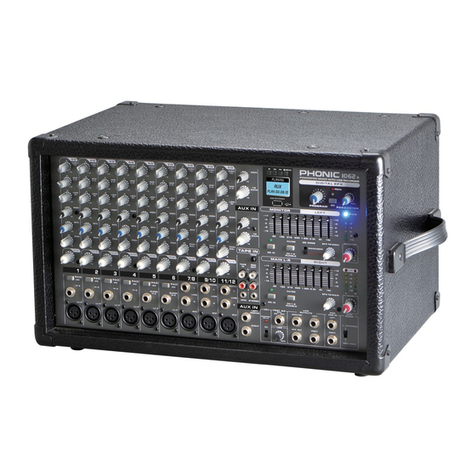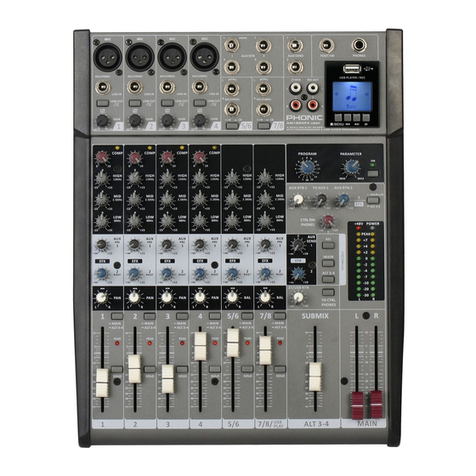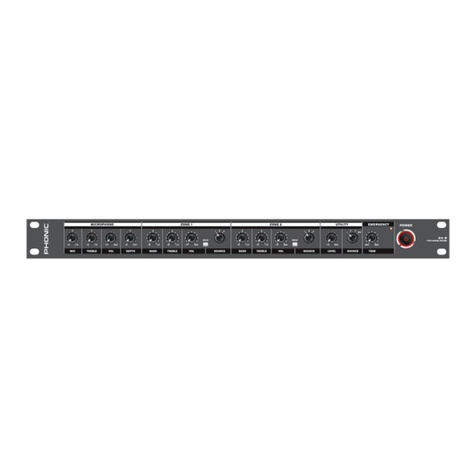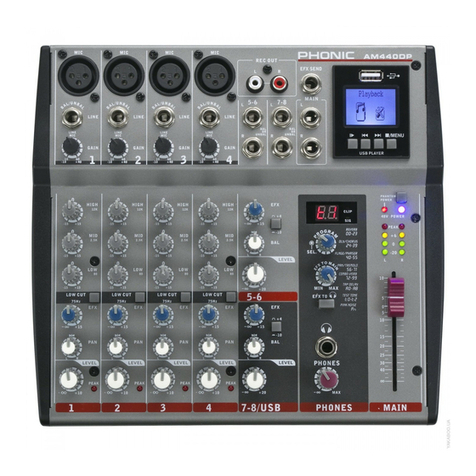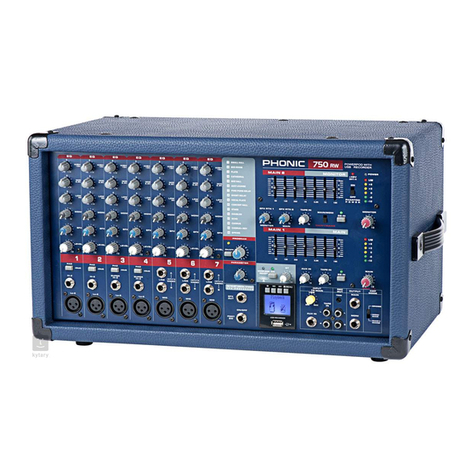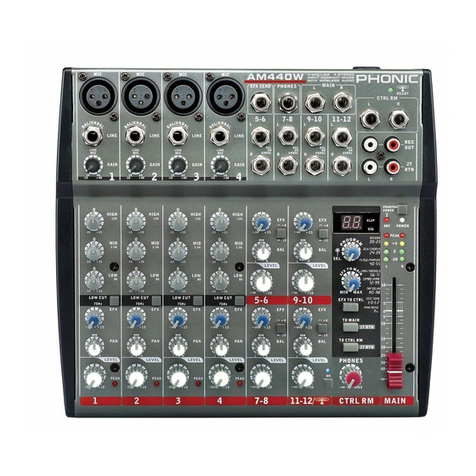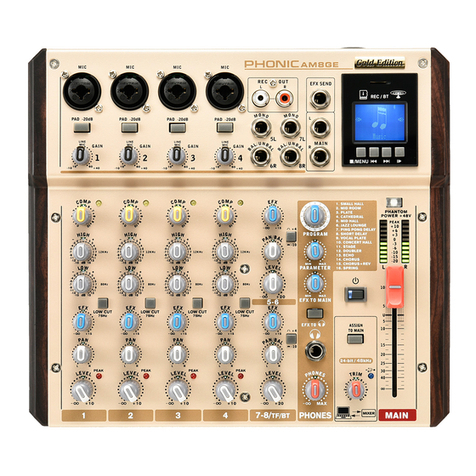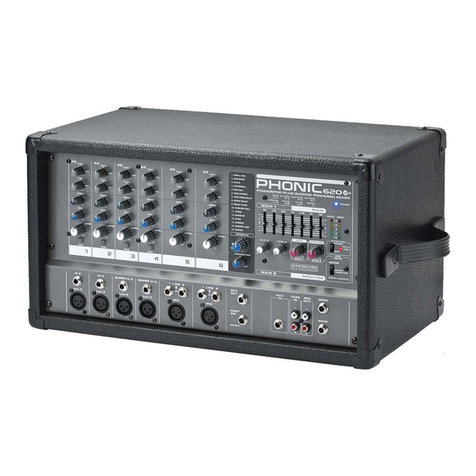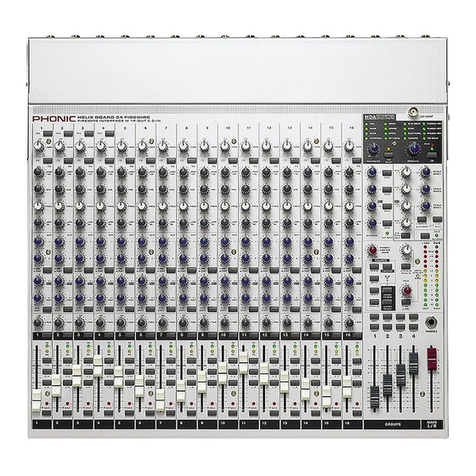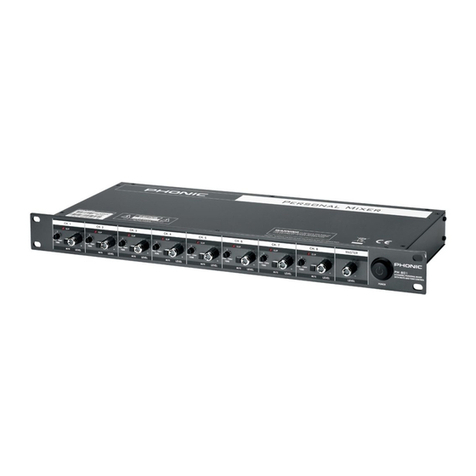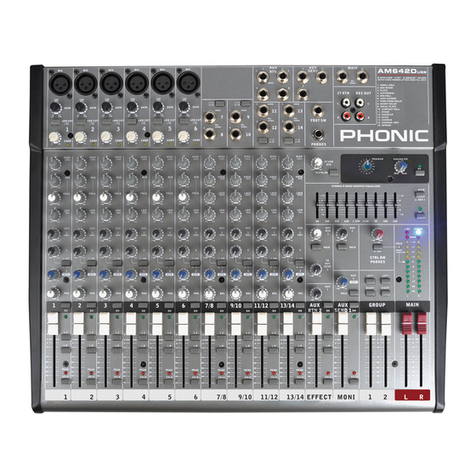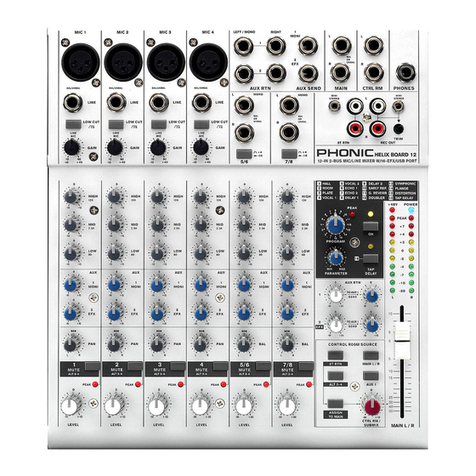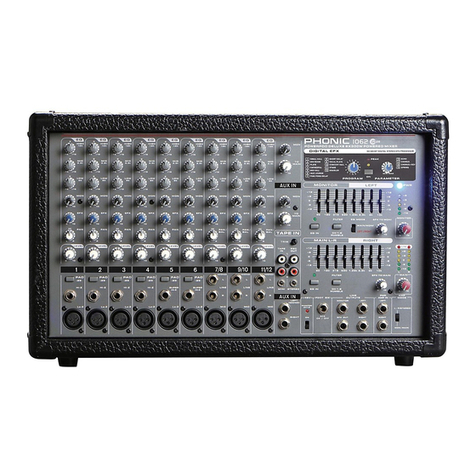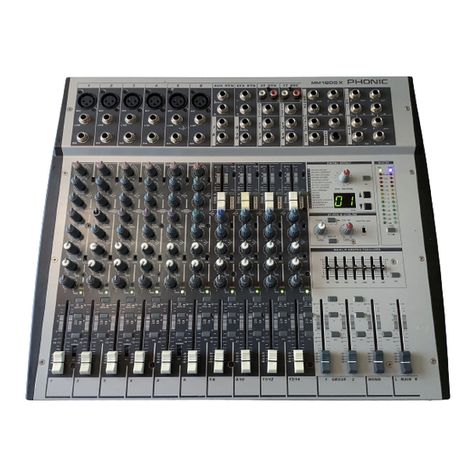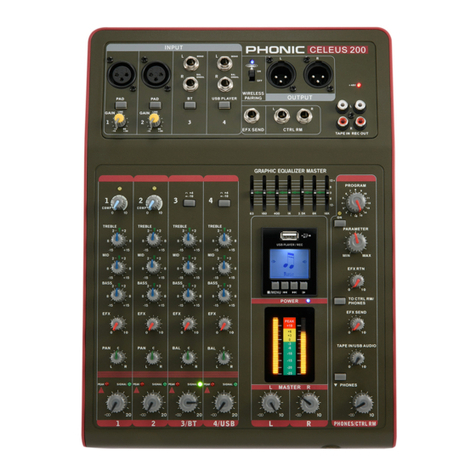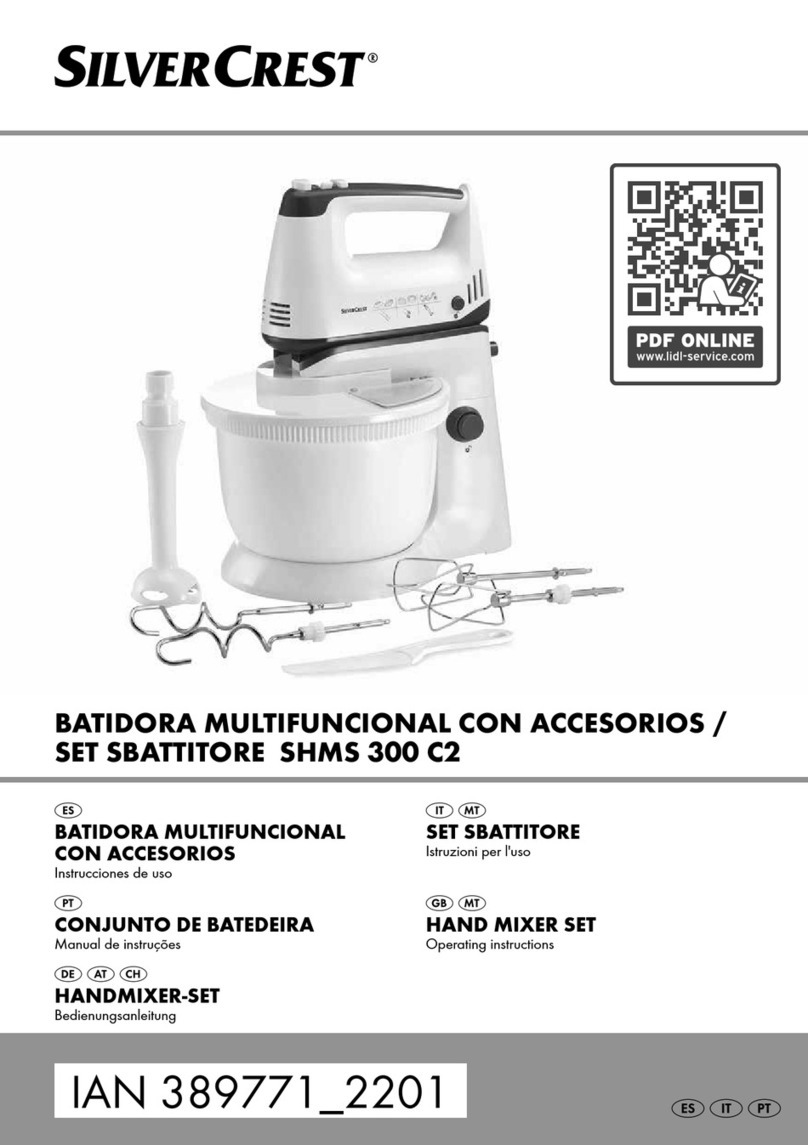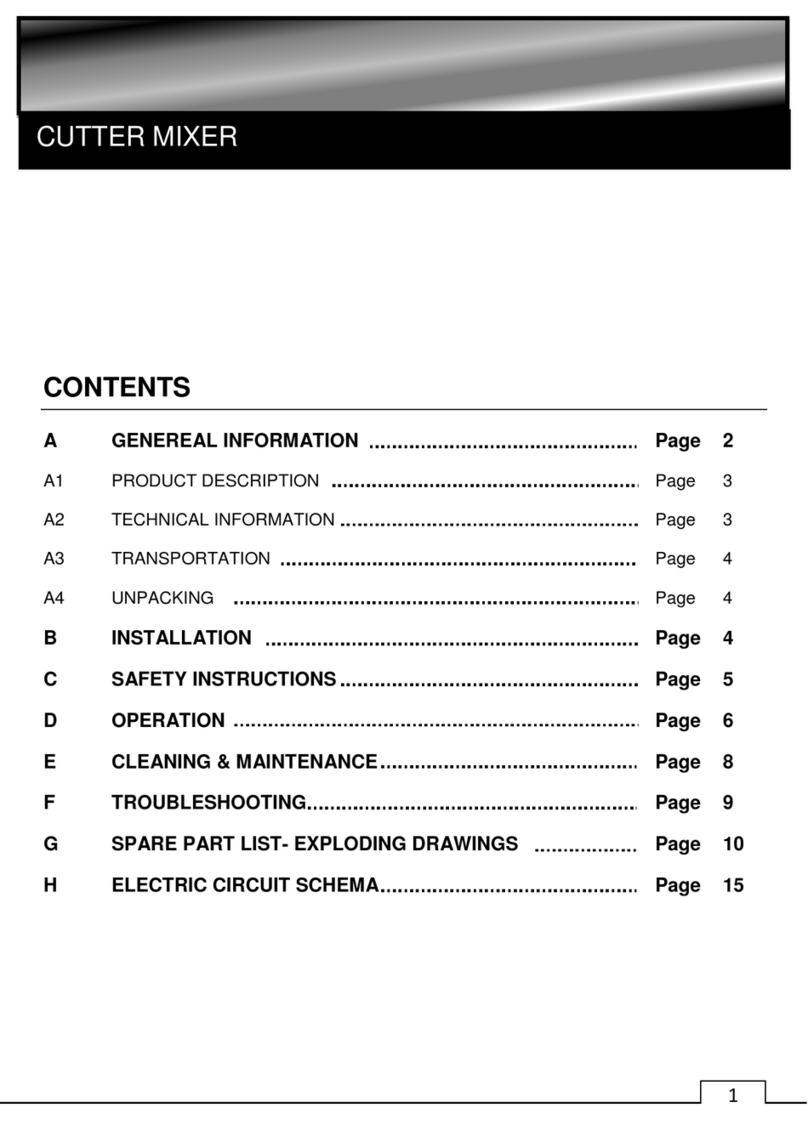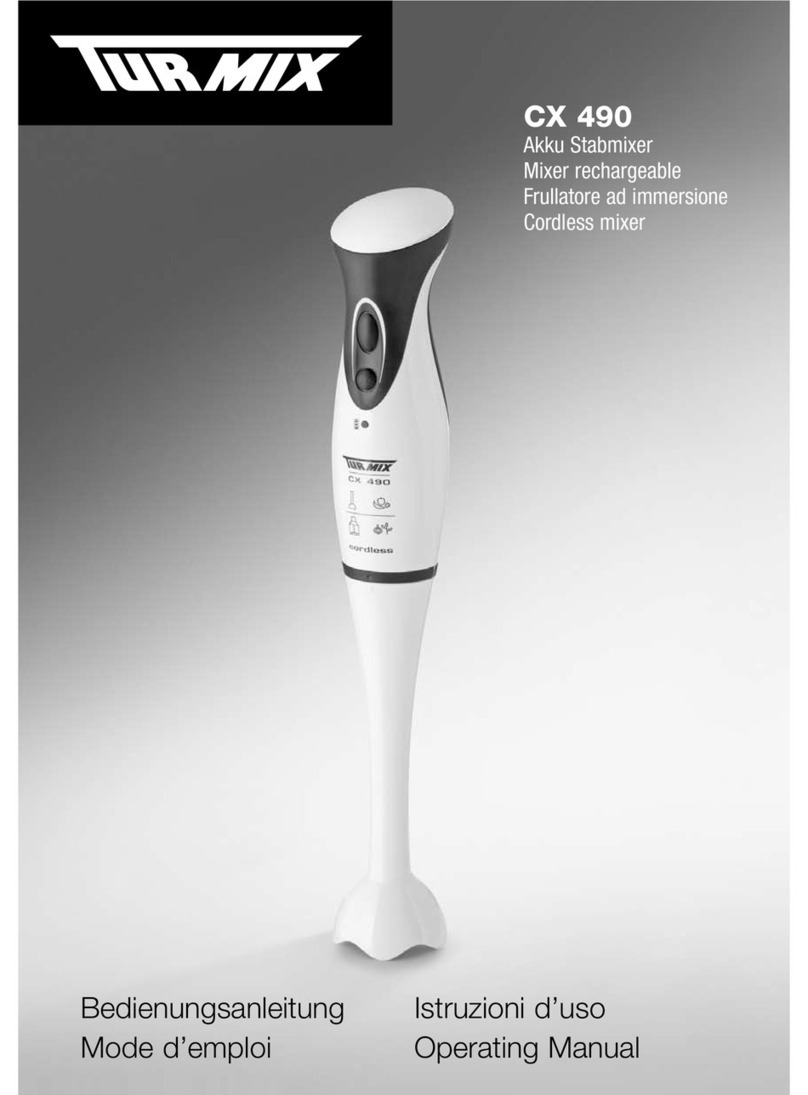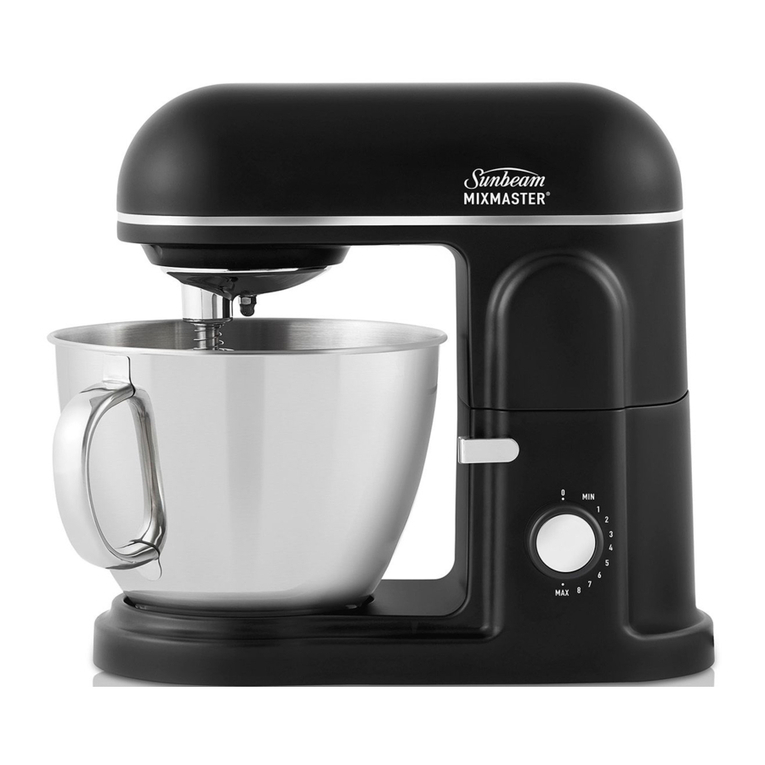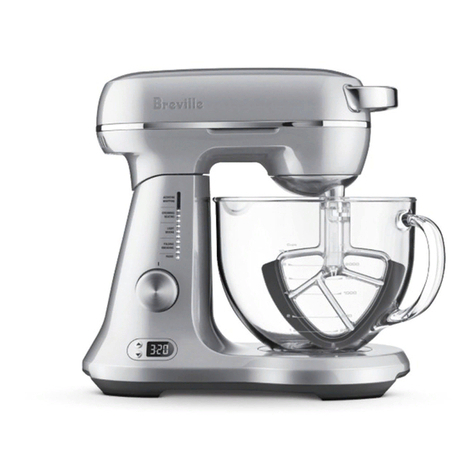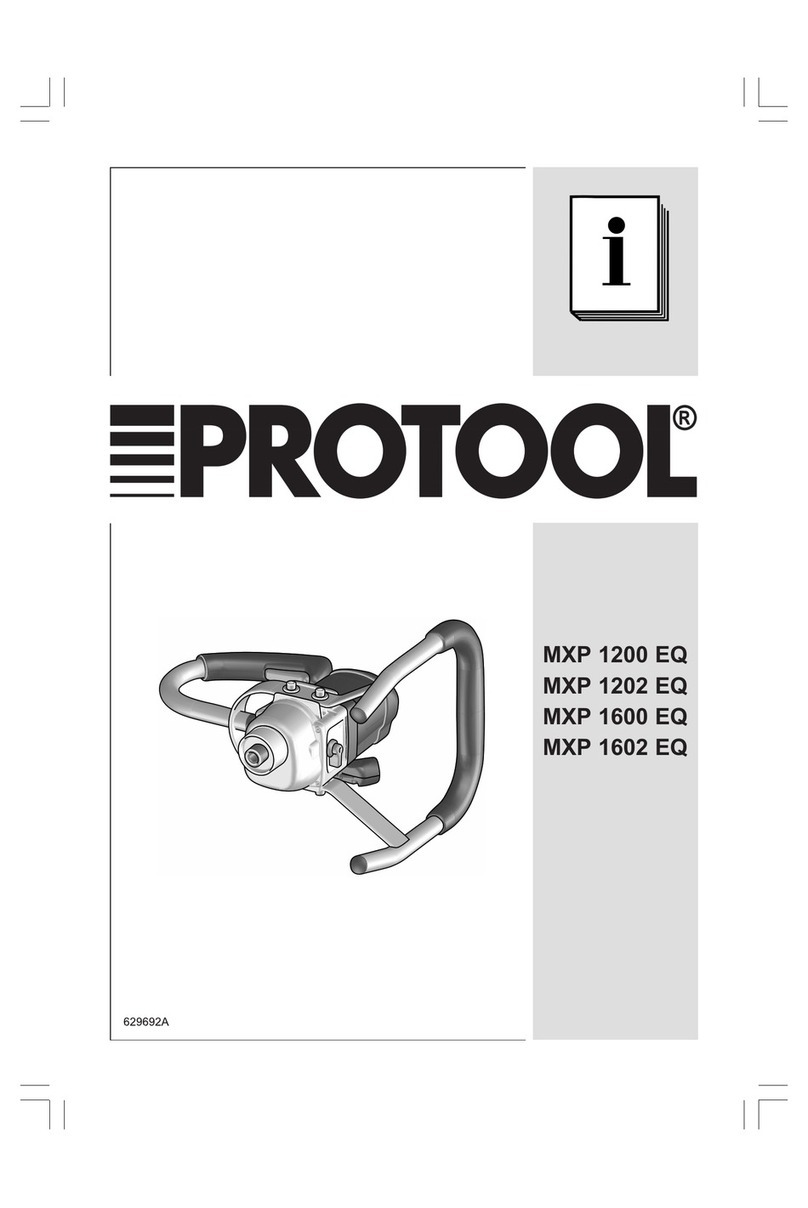
PHONIC CORPORATIONMU 1202/1202X USER’S MANUAL Page 8
MU 1202/1202X USER’S MANUALPHONIC CORPORATION Page 9
22. AUX 1 (Monitor) Control
This control allows the user to send the corresponding
signal to the AUX 1 output, which can be used in
conjunction with an amplifier and studio or stage
monitors, or simply as an auxiliary output for any means
required. The control is pre-fader, therefore any changes
made to the corresponding channel level control (27) do
not affect the AUX 1 send signal.
23. AUX 2 (Effects) Control
This control alters the signal level that is sent to the AUX
2 (or EFX) send output, which can be used in conjunction
with external signal processors (this signal of which can
be returned to mixer via the AUX return input, or any
stereo input channel), or simply as an auxiliary output for
any means required. This control is post-fader, therefore
any changes made to the corresponding channel level
control (27) are also applied to the EFX signal.
24. Pan / Balance Controls
This alternates the degree or level of audio that the left
and right side of the main mix should receive. On mono
channels, this control will adjust the level that the left and
right should receive (pan), where as on a stereo channel,
adjusting the BAL control will attenuate the left or right
audio signals accordingly (balance).
25. Mute / ALT 3-4 (MU1202X Only)
This handy little button is basically a typical
mute button – effectively stopping any
signal received by the channel from being
sent to the Main L/R mixing bus – however
it does so much more. Pushing this button
routes the channel’s signal away from the
Main L/R and to its own “Alternative” stereo
output, where the signal can be used at
will. If you wish to use it to connect an
amplier and speakers, or simply patch it
through to an unused input channel, you
can easily do so.
26. Peak Indicator
This LED indicator will illuminate when
the device hits high peaks, 6 dB before
overload occurs. It is best to adjust the gain
of the channel so that the PEAK indicator
lights up on intervals only. This will ensure
a greater dynamic range of audio.
27. Level Control
This rotary control will alter the signal level
that is sent from the corresponding channel
to the main mixing bus.
Channel Controls
17. Low Cut Filter (75 Hz)
This button, located on channels 1 through to 4, will
activate a low-cut / high-pass filter that reduces all
frequencies below 75 Hz at 18 dB per Octave, helping to
remove any unwanted ground noise or stage rumble.
18. Line / Mic Gain Control
This controls the sensitivity of the input signal of the
Line/Microphone input. The gain should be adjusted
to a level that allows the maximum use of the audio,
while still maintaining the quality of the feed. This can
be accomplished by adjusting it to a level that will allow
the peak indicator occasionally illuminate. All 4 mono
channels on the MU1202 and MU1202X feature this
control.
19. High Frequency Control
This control is used to give a shelving boost or
cut of ±15 dB to high frequency (12 kHz) sounds.
This will adjust the amount of treble included in
the audio of the channel, adding strength and
crispness to sounds such as guitars, cymbals,
and synthesizers.
20. Middle Frequency Control
This control is used to provide a peaking style
of boost and cut to the level of middle frequency
(2.5 kHz) sounds at a range of ±15 dB. Changing
middle frequencies of an audio feed can be
rather difficult when used in a professional
audio mix, as it is usually more desirable to
cut middle frequency sounds rather than boost
them, thereby soothing overly harsh vocal and
instrument sounds in the audio.
21. Low Frequency Control
This control is used to give a shelving boost or
cut of ±15 dB to low frequency (80 Hz) sounds.
This will adjust the amount of bass included in
the audio of the channel, and bring more warmth
and punch to drums and bass guitars.




















